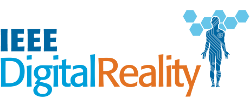Symbiotic Autonomous Systems: A Path from Now to the Future
 Presenter: Roberto Saracco
Presenter: Roberto Saracco
IEEE Future Directions Committee
Symbiotic Autonomous Systems may be seen as a next step in the digital age. The age of computers has fostered automation of many activities and its performances have enabled the creation of new ones. The age of “digital” is harvesting the computer productions, the 0 and I, the bits, giving rise to a parallel World, the cyberspace. In the coming decades we are bound to see progress in both the "computerization" of the World and in its digitalization. These two trends will strengthen one another and will overlap creating the age of Symbiotic Autonomous Systems, SAS.
The progress in computerization is leading to increasing "robotization" of objects and to a seamless presence in our everyday life. We are already commuting using robots and in a few more decades our cars will be robots. Vacuum cleaners robots no longer make headlines and my grandchildren are growing with a playground populated by robots. The sheer number and variety of computerized/robotized objects will seamlessly morph into a fabric of connected objects out of which an overall "behavior" will arise. On the other side, digitalization creates an expanding cyberspace formed by islands that will progressively be connected with one another. These two worlds will get more and more intertwined. We are part of this evolving ambient and we are interacting with both computerized / robotized objects and with the cyberspace. More than that. We are a "component" of this ambient, we live in symbiosis with it and soon enough robots will live in symbioses with us. It will go a step further: loT will become part of our body and artificial organs will become normal in the third decade of this century. These embedded devices will become symbiotic with us (nothing new here, we are living in symbioses with billions of bacteria, they actually outnumber our cells!) and will improve our body Communications capabilities with our ambient extending our symbiotic life.
Symbioses in nature seems just to happen, it is not planned nor it is the result of an agreement between the symbiotic partners. That will be similar, in many cases, in the symbioses among artifacts (and artifacts and humans) once the artifacts will grow to become self adapting. The “autonomous” qualification is important. It does not necessarily mean that each partner can live independently of the other (we cannot live without our symbiotic bacteria), it means that each partner is behaving according to its own “rules”, and the symbiotic relation binds the two autonomies, as it would happen in self driving vehicles in a smart city. The “system” qualification is also important. The future will see behavior and “meaning” stemming from complexity and this, in turns, is a side effect of systems. A single IoT will not qualify to become a partner in a symbiotic relation, but a system comprising several IoTs, interconnections, data, and intelligence will.
Hence this FDC initiative stemming from a vision of future built by independent players that will work independently but will leverage on one another giving rise to new life forms. Welcome to symbiotic autonomous systems!
Stay tuned to our Education page for info on future webinars.


